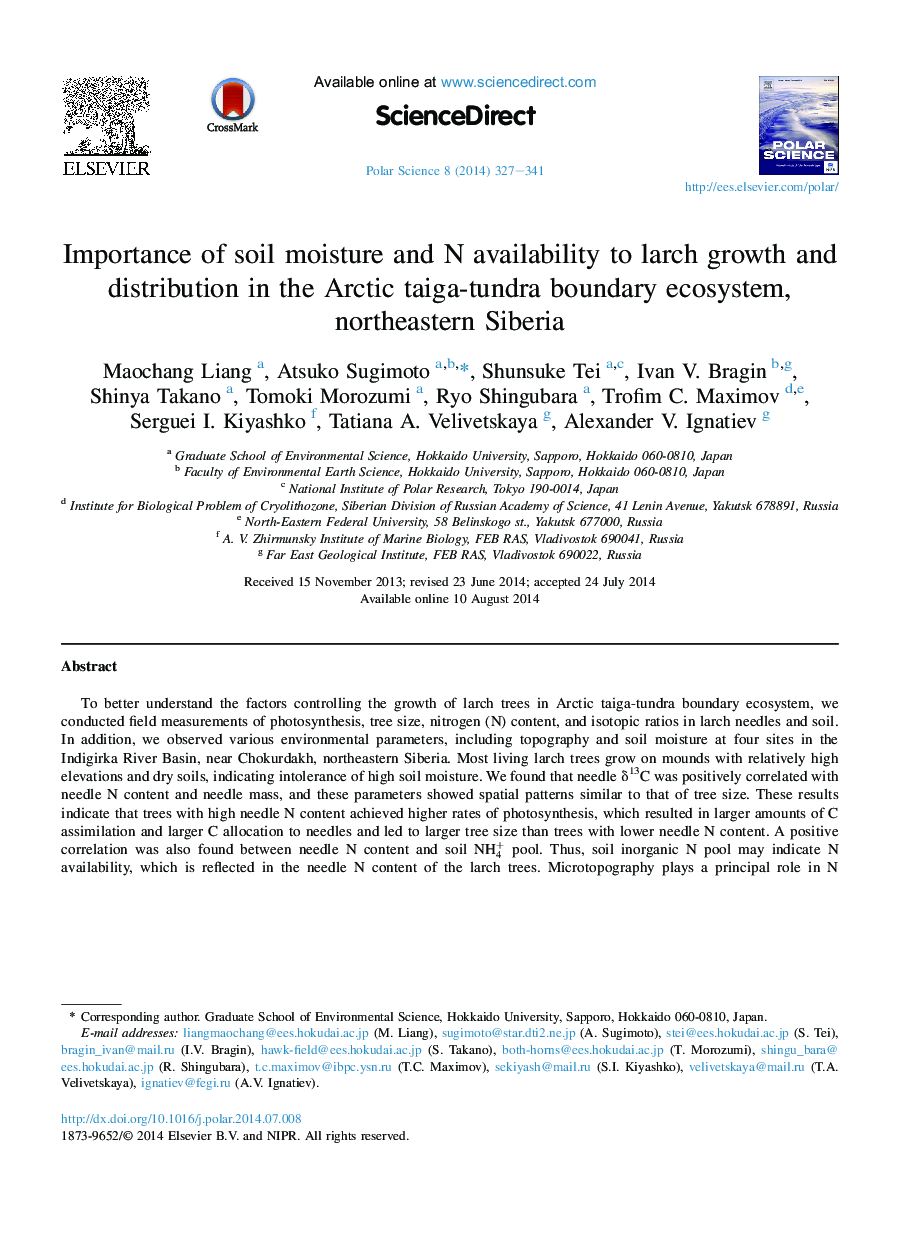| Article ID | Journal | Published Year | Pages | File Type |
|---|---|---|---|---|
| 4683322 | Polar Science | 2014 | 15 Pages |
To better understand the factors controlling the growth of larch trees in Arctic taiga-tundra boundary ecosystem, we conducted field measurements of photosynthesis, tree size, nitrogen (N) content, and isotopic ratios in larch needles and soil. In addition, we observed various environmental parameters, including topography and soil moisture at four sites in the Indigirka River Basin, near Chokurdakh, northeastern Siberia. Most living larch trees grow on mounds with relatively high elevations and dry soils, indicating intolerance of high soil moisture. We found that needle δ13C was positively correlated with needle N content and needle mass, and these parameters showed spatial patterns similar to that of tree size. These results indicate that trees with high needle N content achieved higher rates of photosynthesis, which resulted in larger amounts of C assimilation and larger C allocation to needles and led to larger tree size than trees with lower needle N content. A positive correlation was also found between needle N content and soil NH4+ pool. Thus, soil inorganic N pool may indicate N availability, which is reflected in the needle N content of the larch trees. Microtopography plays a principal role in N availability, through a change in soil moisture. Relatively dryer soil of mounds with higher elevation and larger extent causes higher rates of soil N production, leading to increased N availability for plants, in addition to larger rooting space for trees to uptake more N.
